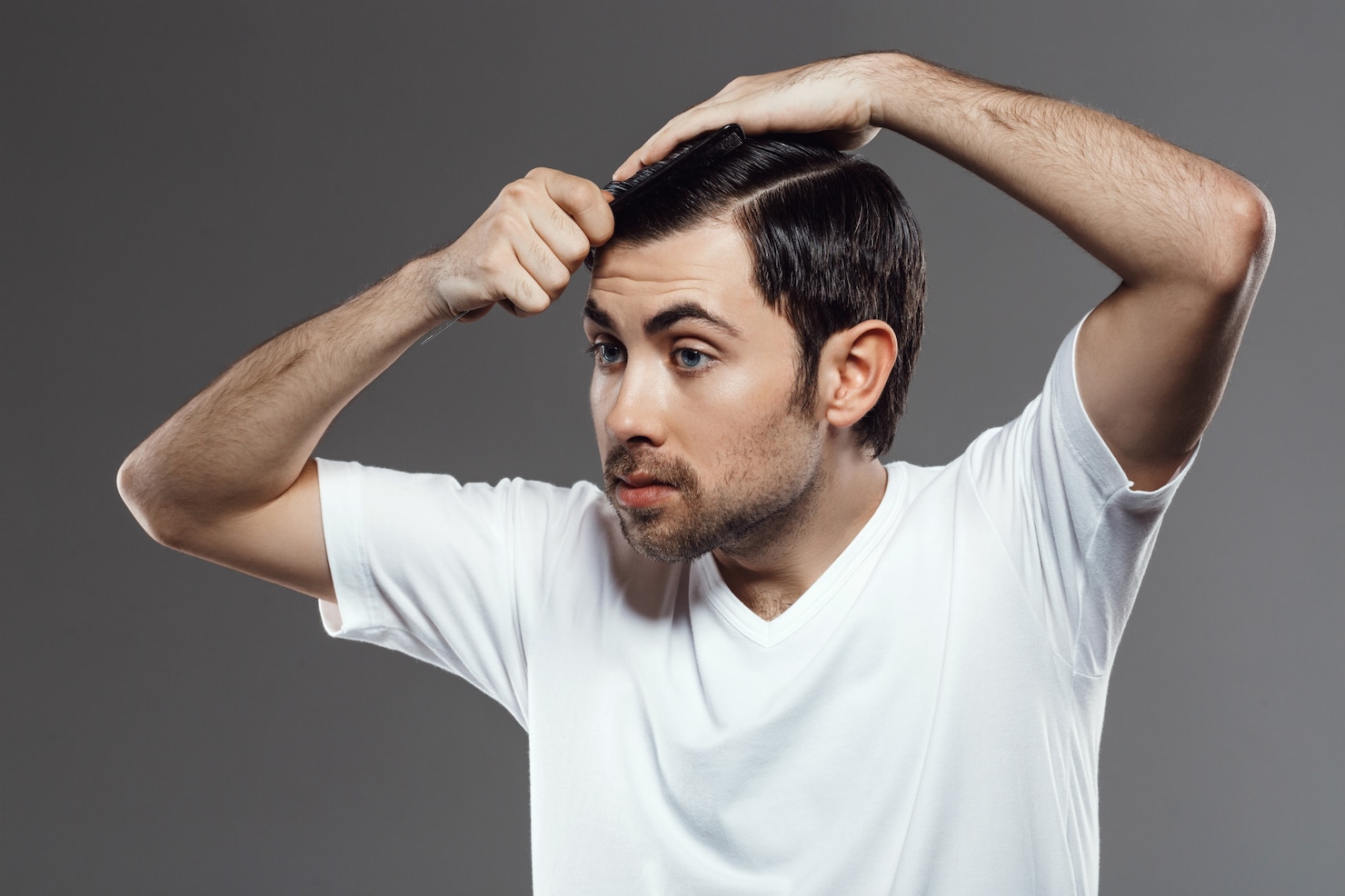
Are you frustrated with severe hair breakage and thinning? Don't worry, we've got you covered! In this blog post, we'll delve into five essential tips to address these hair concerns effectively. We'll explore the causes of breakage and thinning, preventive measures to maintain healthy strands, and methods to promote hair growth.
Get ready to revive your locks and regain confidence in your hair's strength and thickness. Let's dive right in!
Understanding Hair Breakage and Thinning
Causes of Severe Hair Breakage
When it comes to hair breakage on top of the head, there are several key factors that can contribute to this issue. One possible cause is excessive heat styling and the use of harsh hair products. Constant exposure to high temperatures from blow dryers, curling irons, and straighteners can weaken the hair fibers, leading to breakage. Additionally, using products that contain harsh chemicals or sulfates can strip the hair of its natural oils, making it more prone to breakage.
Another factor that can contribute to hair breakage on top of the head is improper hair care practices. For instance, vigorous brushing or combing of wet hair can cause it to become weak and break easily. Similarly, tying the hair too tightly or using hair accessories that tug on the hair can lead to breakage. It's important to handle the hair with care, opting for wide-toothed combs or brushes specifically designed for wet hair.
Causes of Thinning Hair
Thinning hair, on the other hand, may be caused by a variety of factors. One common cause is age-related hair loss, also known as androgenetic alopecia. This type of hair loss is influenced by genetics and hormones, and it typically results in a gradual thinning of the hair over time.
Other causes of thinning hair can include hormonal imbalances, nutritional deficiencies, and certain medical conditions. For instance, thyroid disorders, such as hypothyroidism or hyperthyroidism, can contribute to hair thinning. Inadequate intake of essential nutrients, such as vitamins and minerals, can also affect the health of the hair follicles.
Furthermore, hair breakage around the face can contribute to the appearance of thinning hair. The hair around the face is often more delicate and susceptible to breakage due to frequent styling, exposure to environmental factors, and friction caused by rubbing against pillows or clothing.
Key Takeaway:
Hair breakage on top of the head can be caused by excessive heat styling, harsh hair products, and improper care practices. Thinning hair may result from age-related factors, hormonal imbalances, nutritional deficiencies, and various medical conditions. To address these issues, it's important to adopt gentle hair care routines, minimize heat styling, choose nourishing hair products, and seek professional advice if necessary. Remember to treat your hair with care to promote healthy growth and minimize breakage.Tips for Preventing Hair Breakage
Moisturizing and Conditioning
When it comes to how to fix hair breakage on top of the head, proper moisturizing and conditioning are essential steps in your hair care routine. The hair on the top of your head is more prone to dryness and brittleness, which can lead to breakage. To combat this, it's crucial to provide your hair with the hydration it needs.
Start by using a moisturizing shampoo and conditioner specifically formulated for your hair type. Look for products that contain nourishing ingredients such as natural oils and proteins. These ingredients help to replenish moisture, strengthen the hair shaft, and reduce the risk of breakage. Remember to focus on the roots and lengths of your hair while applying the conditioner, as these areas are more susceptible to damage.
In addition to regular conditioning, consider incorporating a deep conditioning treatment into your routine once or twice a week. Deep conditioning provides an extra boost of hydration and nourishment, helping to repair and strengthen your hair from within. Apply the treatment to damp hair, focusing on the areas where breakage is most common, such as the top of the head. Leave it on for the recommended time before rinsing thoroughly.
Avoiding Harsh Chemical Treatments
Another important tip for preventing hair breakage on top of the head is to steer clear of harsh chemical treatments. Chemical processes such as relaxers, perms, and excessive heat styling can weaken the hair and make it more prone to breakage. Opt for gentler alternatives and embrace natural hair textures whenever possible.
If you want to straighten or style your hair, consider using heat protectant products before applying any heat. These products create a barrier between your hair and the heat source, minimizing damage and reducing the risk of breakage. Additionally, try to limit the frequency of heat styling and give your hair regular breaks to recover and regain its strength.
Key Takeaway:
To prevent hair breakage on top of the head, prioritize moisturizing and conditioning your hair regularly. Look for products that provide hydration and nourishment, focusing on the roots and lengths of your hair. Avoid harsh chemical treatments and opt for gentler alternatives to minimize damage. Embracing your natural hair texture and giving it regular breaks from heat styling can also help prevent breakage and maintain healthier, stronger hair overall.Gentle Hair Care Practices

Image Source: FreePik
Balanced Diet and Nutritional Supplements
When it comes to maintaining a healthy head of hair, a balanced diet plays a pivotal role. Just like your body, your hair requires a nourishing supply of vitamins and minerals to thrive.
To prevent hair breakage on top of your head and promote overall hair health, it is essential to fuel your body with the right nutrients. Incorporate a variety of fruits, vegetables, lean proteins, and whole grains into your daily meals to ensure you're providing your hair with the essential building blocks it needs to grow strong and resilient.
In addition to a well-rounded diet, nutritional supplements can offer an extra boost to your hair's vitality. Look for supplements rich in biotin, vitamins A, C, D, and E, and minerals like zinc and iron, as these nutrients have been linked to hair health and growth.
However, it's important to consult with a healthcare professional before adding any supplements to your routine to ensure they align with your specific needs.
Scalp Care and Stimulation
A healthy scalp is the foundation for healthy hair. Devoting attention to your scalp not only promotes hair growth but also helps combat hair breakage on top of your head and hair breakage around the face. Start by cleansing your scalp regularly with a gentle shampoo formulated for your hair type. Massage the shampoo into your scalp using circular motions to increase blood circulation and stimulate the hair follicles.
To further enhance scalp health and stimulate hair growth, consider incorporating scalp massages into your hair care routine. Using your fingertips, gently massage your scalp in a circular motion for a few minutes each day. This not only feels incredibly relaxing but also helps to increase blood flow to the scalp, nourishing the hair follicles and promoting hair growth.
Regular exfoliation of the scalp is another important aspect of scalp care. By removing dead skin cells and product buildup, you create a healthier environment for hair growth. Use a scalp exfoliating treatment once or twice a week, focusing on the areas where you experience hair breakage on top of your head or hair breakage around the face.
Key Takeaway:
To maintain healthy hair and prevent hair breakage, embrace gentle hair care practices such as maintaining a balanced diet and considering nutritional supplements. Paying attention to scalp care and stimulation through regular cleansing, massages, and exfoliation can promote hair growth and minimize hair breakage on top of the head and around the face.Products to Consider

Image Source: FreePik
Moisturizing and Strengthening Shampoos and Conditioners
When it comes to combating hair breakage on top of the head, selecting the right moisturizing and strengthening shampoos and conditioners is paramount. These haircare heroes work in harmony to nourish and fortify your strands, helping you regain that lustrous, resilient mane you've been yearning for.
Moisturizing shampoos and conditioners are specially formulated to infuse your hair with essential hydration, replenishing moisture that has been lost due to environmental factors or excessive styling. By restoring the moisture balance, these products effectively address the issue of hair breakage on top of the head, as they fortify each strand from within.
Nourishing Oils and Serums
To combat hair breakage around the face, incorporating nourishing oils and serums into your haircare routine is essential. These lightweight yet potent formulations provide a much-needed boost of hydration and protection, addressing the specific needs of the delicate hair around your face.
Nourishing oils, such as argan oil or jojoba oil, work wonders in replenishing moisture and improving the elasticity of your hair. Massage a few drops of oil into the affected areas, gently working it through your strands to promote strength and flexibility.
Key Takeaway:
To address hair breakage on top of the head, opt for moisturizing and strengthening shampoos and conditioners that restore moisture and fortify your strands. For hair breakage around the face, incorporate nourishing oils and serums that provide hydration and protection. By choosing the right products, you can combat hair breakage and promote healthier, more resilient hair overall.Conclusion
In conclusion, severe hair breakage and thinning can be effectively addressed by implementing a comprehensive approach to hair care. By understanding the causes behind these issues and adopting preventive measures, you can take control of your hair health and achieve stronger, thicker strands.

